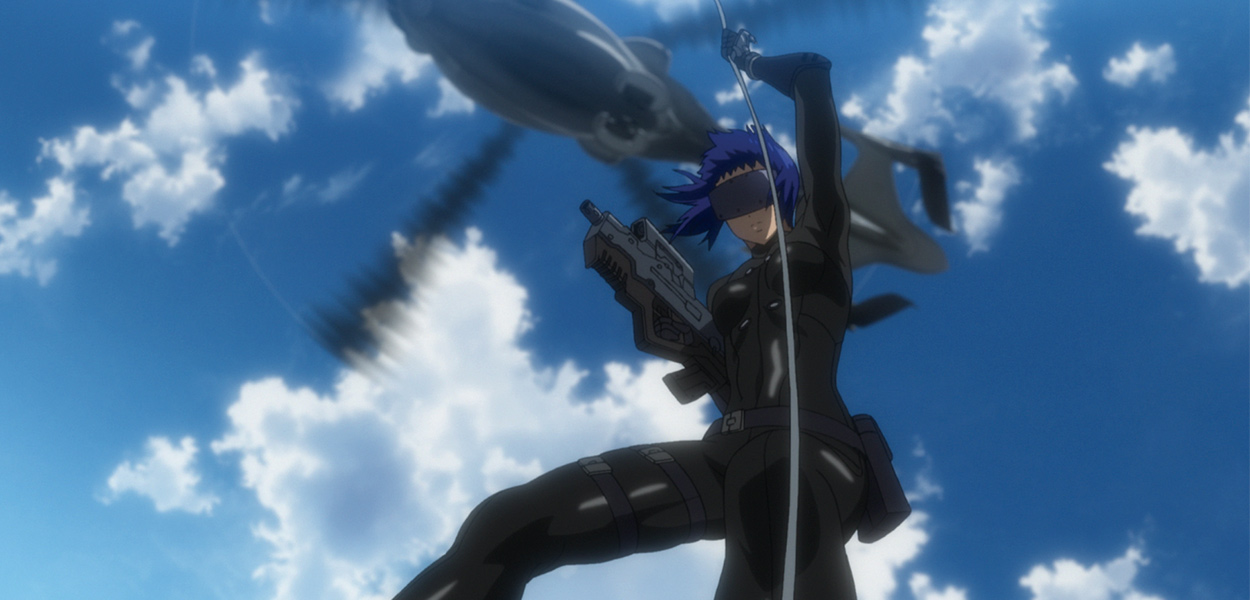★★★
“Not be confused with the old movie.”
Really, that was the best name they could come up with? Oh, well. “A rose by any other name…” Released in Japan in June 2015, more or less on the 20th anniversary of the “not-so-new movie”, I guess, it’s the most recent incarnation of the animated universe. This is more or less a direct follow-on from the Arise series, following up on the “Firestarter” arc, the name for both a wizard-class hacker and the virus they have created. As such, you’d definitely fare better if you’ve seen that series first, since (as we’ll see) it has enough issues with new plot elements, and doesn’t bother with much explanation about any pre-existing ones. This feature is also using the same redesigned character designs, and with the Major (Sakamoto) operating in conjunction with Section 9 and Aramaki (Juku), rather than under his direct control.
The main incident under investigation is the assassination of the Japanese Prime Minister, blown up with a briefcase bomb, during a meeting. That’s the simple synopsis. The more accurate one would involve a complex and tangled web of government departments and their intersection with elements of the military-industrial complex. It’s a alphabet soup blitzkrieg of acronyms: MOD, MOC, DFA. Or was it MFA? Either way, it becomes awfully hard to keep track of who is doing what to whom, for the sake of which alliance. Perhaps it makes more sense if you have a pre-existing awareness of the intricacies of the Japanese federal bureaucracy. Otherwise, you’ll be left scratching your head and/or yawning for significant chunks of this.
Which is a shame, as there are some aspects which are still enjoyable. I particularly liked the idea that the head villainess actually uses the same make and model of prosthetic body as Major Kusanagi, so in effect she is hunting her own doppelganger. This ties together with more information on her childhood, in a cybernetic orphanage, which is being run for purposes that are very far from charitable. There is more of a sense of team here. The Major refers to her colleagues as “parts,” something they take to mean they’re expendable – or it could actually be high praise, given the nature of her existence. It’s symptomatic of the ambivalence about technology that has been present throughout, over a period now spanning two decades.
The action is as impressive as it was in Arise, with a number of show-stopping set-pieces, pitting Kusanagi and her team against a range of opponents, from near-human to entirely artificial. There are also surprisingly poignant moments, such as their questioning of a former active-duty soldier whose job is now to receive the last words of his colleagues. This renewed his purpose in life, after he had been left behind to wallow in his obsolete prosthetic body. But these elements just make the murky plotting all the more frustrating, and I can’t help suspecting the writers confused obscurity with depth.
Dir: Kazuchika Kise
Star: Maaya Sakamoto, Ikkyuu Juku, Kenichirou Matsuda, Tarusuke Shingaki





